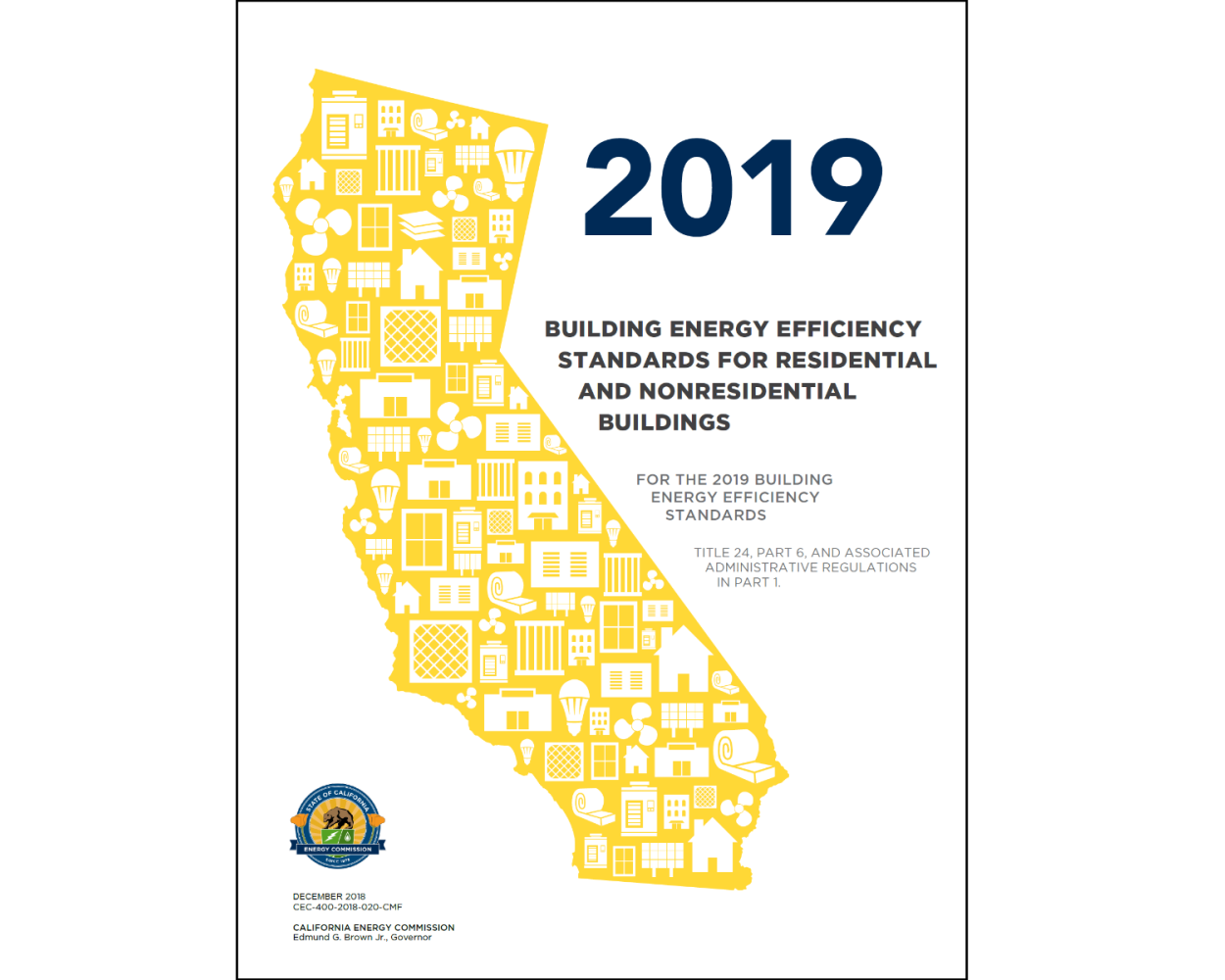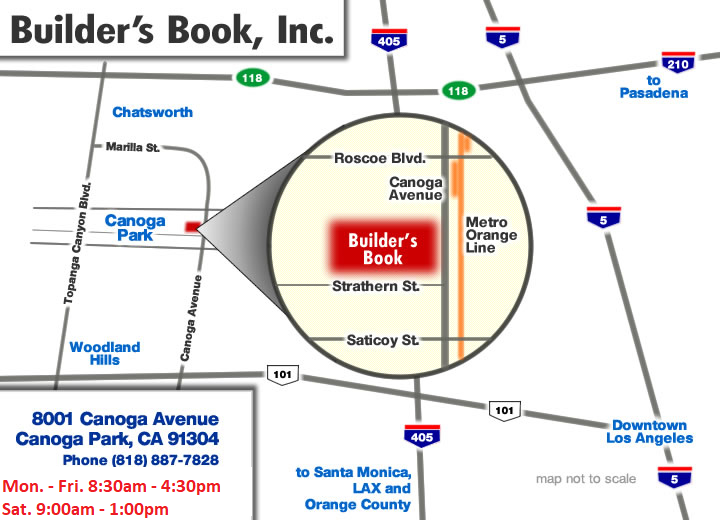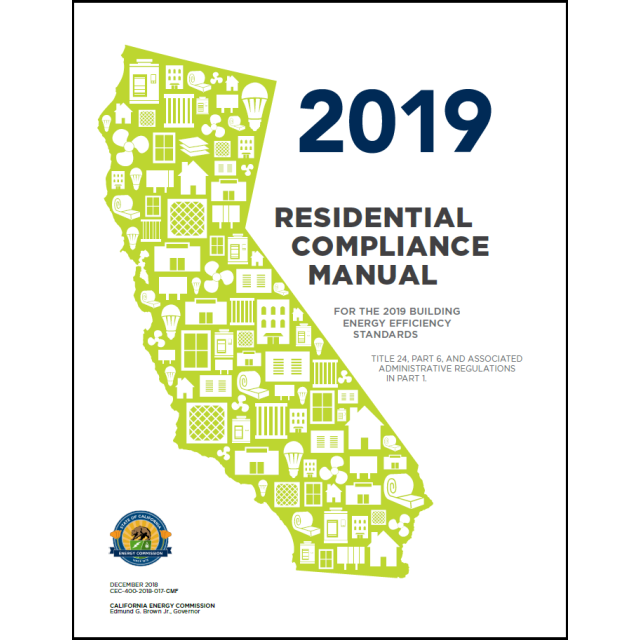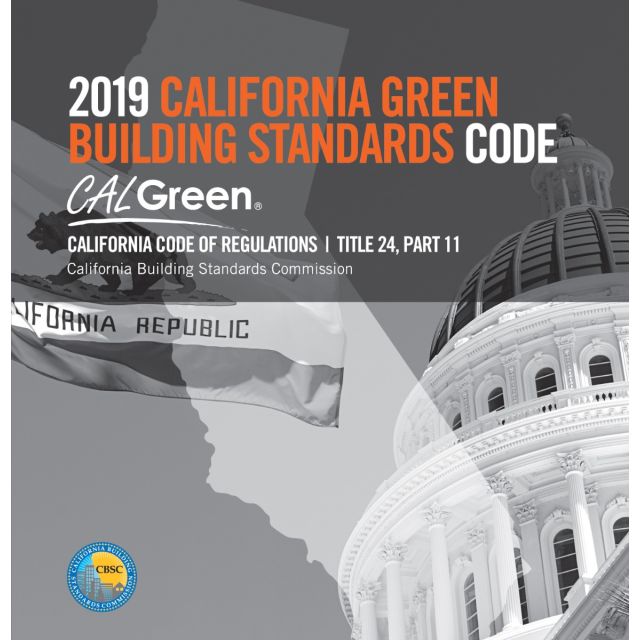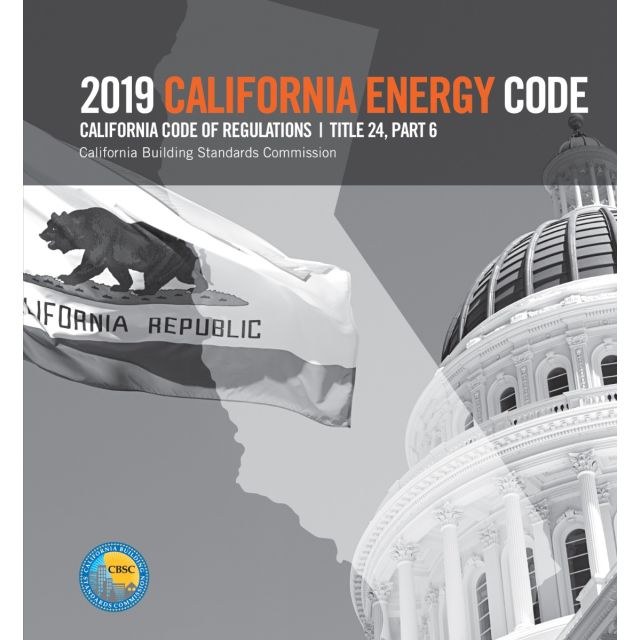2019 Building Energy Efficiency Standards
2019 Building Energy Efficiency Standards for Residential and Nonresidential Buildings
The Building Energy Efficiency Standards were first adopted in 1976 and have been updated periodically since then as directed by statute. In 1975 the Department of Housing and Community Development adopted rudimentary energy conservation standards under their State Housing Law authority that were a precursor to the first generation of the Standards. However, the Warren- Alquist Act was passed one year earlier with explicit direction to the Energy Commission (formally titled the State Energy Resources Conservation and Development Commission) to adopt and implement the Standards. The Energy Commission’s statute created separate authority and specific direction regarding what the Standards are to address, what criteria are to be met in developing the Standards, and what implementation tools, aids, and technical assistance are to be provided.
The Standards contain energy and water efficiency requirements (and indoor air quality requirements) for newly constructed buildings, additions to existing buildings, and alterations to existing buildings. Public Resources Code Sections 25402 subdivisions (a)-(b) and 25402.1 emphasize the importance of building design and construction flexibility by requiring the Energy Commission to establish performance standards, in the form of an "energy budget" in terms of the energy consumption per square foot of floor space. For this reason, the Standards include both a prescriptive option, allowing builders to comply by using methods known to be efficient, and a performance option, allowing builders complete freedom in their designs provided the building achieves the same overall efficiency as an equivalent building using the prescriptive option. Reference Appendices are adopted along with the Standards that contain data and other information that helps builders comply with the Standards.
The 2019 update to the Building Energy Efficiency Standards focuses on several key areas to improve the energy efficiency of newly constructed buildings and additions and alterations to existing buildings. The most significant efficiency improvements to the residential Standards include the introduction of photovoltaic into the prescriptive package, improvements for attics, walls, water heating, and lighting. The most significant efficiency improvements to the nonresidential Standards include alignment with the ASHRAE 90.1 2017 national standards. The 2019 Standards also include changes made throughout all of its sections to improve the clarity, consistency, and readability of the regulatory language.
Public Resources Code Section 25402.1 also requires the Energy Commission to support the performance standards with compliance tools for builders and building designers. The Alternative Calculation Method (ACM) Approval Manual adopted by regulation as an appendix of the Standards establishes requirements for input, output and calculational uniformity in the computer programs used to demonstrate compliance with the Standards. From this, the Energy Commission develops and makes publicly available free, public domain building modeling software in order to enable compliance based on modeling of building efficiency and performance. The ACM Approval Manual also includes provisions for private firms seeking to develop compliance software for approval by the Energy Commission, which further encourages flexibility and innovation.
The Standards are conceptually divided into three basic sets. First, there is a basic set of mandatory requirements that apply to all buildings. Second, there is a set of performance standards the energy budgets - that vary by climate zone (of which there are 16 in California) and building type; thus the Standards are tailored to local conditions, and provide flexibility in how energy efficiency in buildings can be achieved. Finally, the third set constitutes an alternative to the performance standards, which is a set of prescriptive packages that provide a recipe or a checklist compliance approach.
| Price | $39.95 |
|---|---|
| Customer Service | We're Here To Help Call us anytime during our customer service hours... Monday through Friday - 8:30 am to 4:30 pm (Pacific) Order Questions: TOLL FREE, 800-273-7375 (Outside the U.S. call 818-887-7828). Our Address: 8001 Canoga Avenue Canoga Park, CA 91304 US Phone: 800-275-2665 E-mail: sales@buildersbook.com
|
| Description | 2019 Building Energy Efficiency Standards for Residential and Nonresidential Buildings The Building Energy Efficiency Standards were first adopted in 1976 and have been updated periodically since then as directed by statute. In 1975 the Department of Housing and Community Development adopted rudimentary energy conservation standards under their State Housing Law authority that were a precursor to the first generation of the Standards. However, the Warren- Alquist Act was passed one year earlier with explicit direction to the Energy Commission (formally titled the State Energy Resources Conservation and Development Commission) to adopt and implement the Standards. The Energy Commission’s statute created separate authority and specific direction regarding what the Standards are to address, what criteria are to be met in developing the Standards, and what implementation tools, aids, and technical assistance are to be provided. The Standards contain energy and water efficiency requirements (and indoor air quality requirements) for newly constructed buildings, additions to existing buildings, and alterations to existing buildings. Public Resources Code Sections 25402 subdivisions (a)-(b) and 25402.1 emphasize the importance of building design and construction flexibility by requiring the Energy Commission to establish performance standards, in the form of an "energy budget" in terms of the energy consumption per square foot of floor space. For this reason, the Standards include both a prescriptive option, allowing builders to comply by using methods known to be efficient, and a performance option, allowing builders complete freedom in their designs provided the building achieves the same overall efficiency as an equivalent building using the prescriptive option. Reference Appendices are adopted along with the Standards that contain data and other information that helps builders comply with the Standards. The 2019 update to the Building Energy Efficiency Standards focuses on several key areas to improve the energy efficiency of newly constructed buildings and additions and alterations to existing buildings. The most significant efficiency improvements to the residential Standards include the introduction of photovoltaic into the prescriptive package, improvements for attics, walls, water heating, and lighting. The most significant efficiency improvements to the nonresidential Standards include alignment with the ASHRAE 90.1 2017 national standards. The 2019 Standards also include changes made throughout all of its sections to improve the clarity, consistency, and readability of the regulatory language. Public Resources Code Section 25402.1 also requires the Energy Commission to support the performance standards with compliance tools for builders and building designers. The Alternative Calculation Method (ACM) Approval Manual adopted by regulation as an appendix of the Standards establishes requirements for input, output and calculational uniformity in the computer programs used to demonstrate compliance with the Standards. From this, the Energy Commission develops and makes publicly available free, public domain building modeling software in order to enable compliance based on modeling of building efficiency and performance. The ACM Approval Manual also includes provisions for private firms seeking to develop compliance software for approval by the Energy Commission, which further encourages flexibility and innovation. The Standards are conceptually divided into three basic sets. First, there is a basic set of mandatory requirements that apply to all buildings. Second, there is a set of performance standards the energy budgets - that vary by climate zone (of which there are 16 in California) and building type; thus the Standards are tailored to local conditions, and provide flexibility in how energy efficiency in buildings can be achieved. Finally, the third set constitutes an alternative to the performance standards, which is a set of prescriptive packages that provide a recipe or a checklist compliance approach. |

